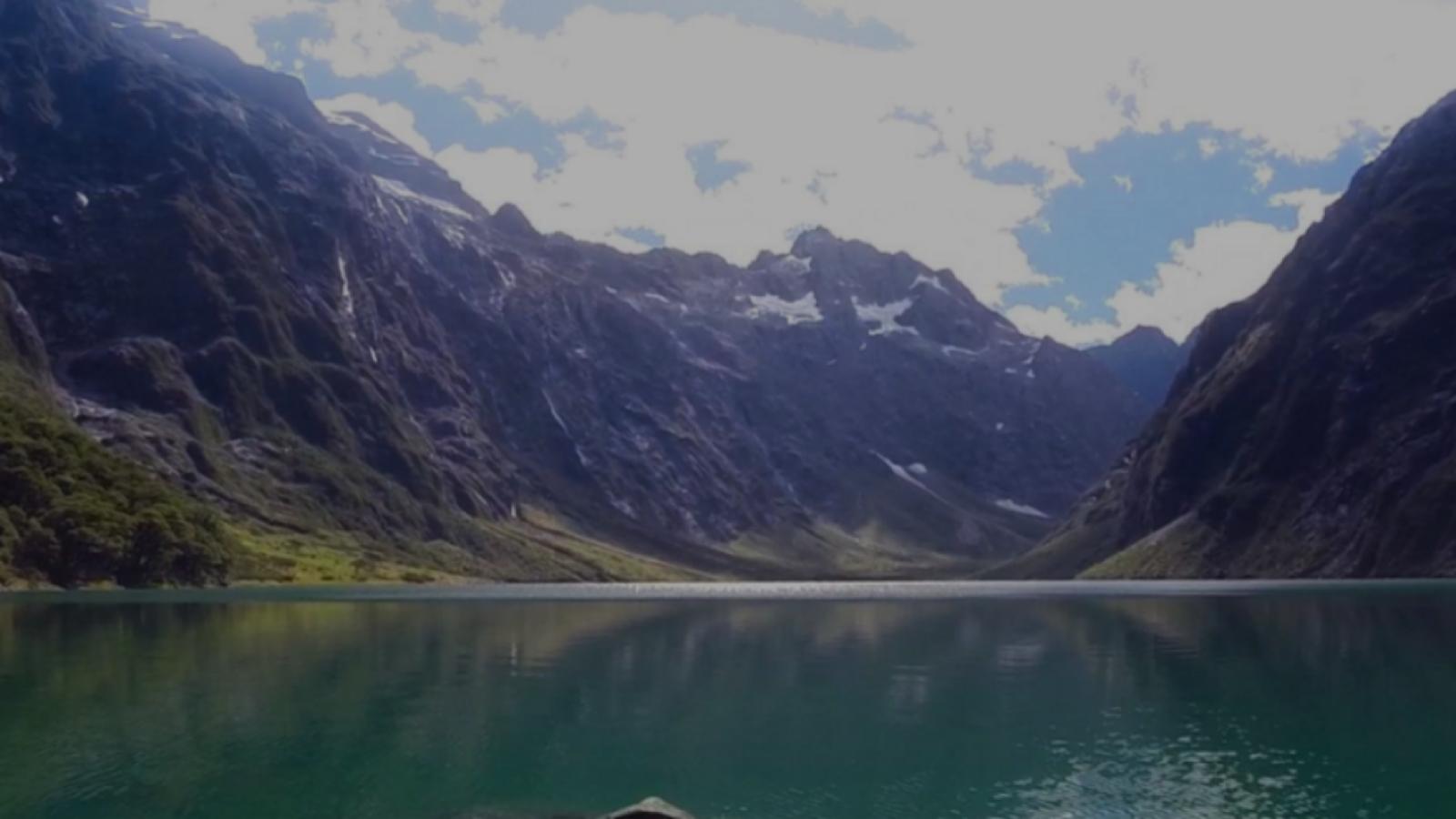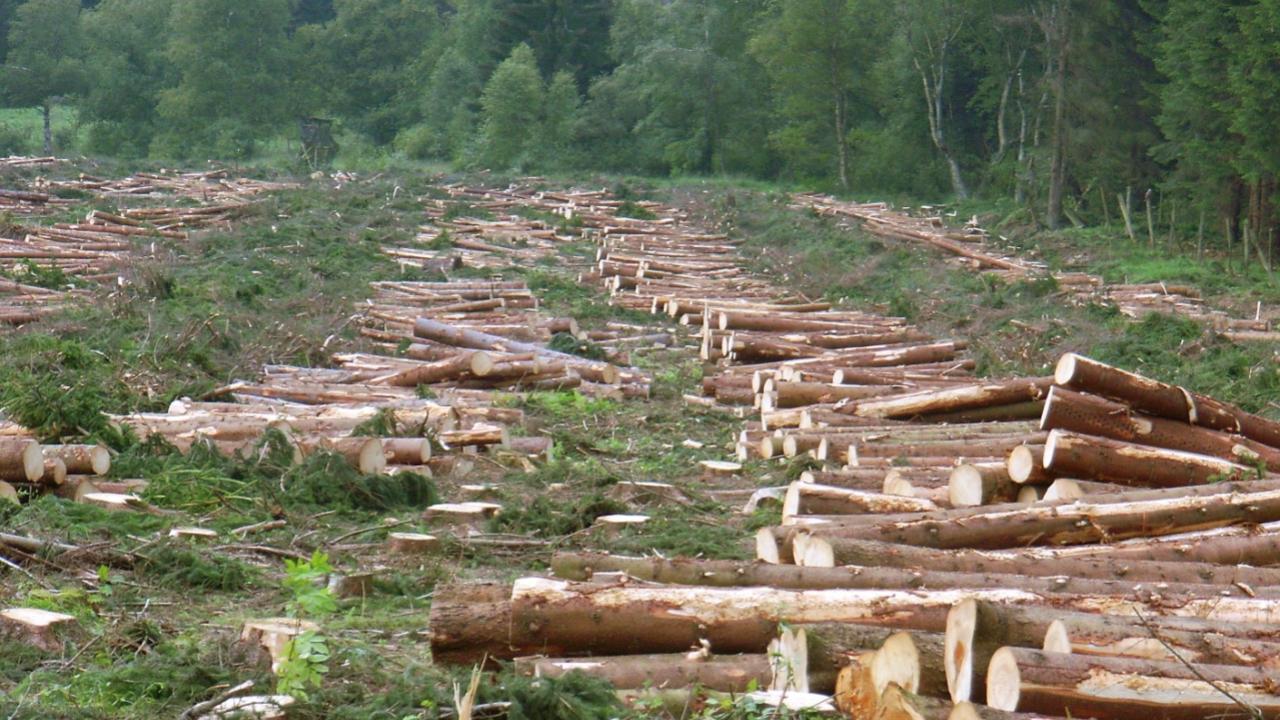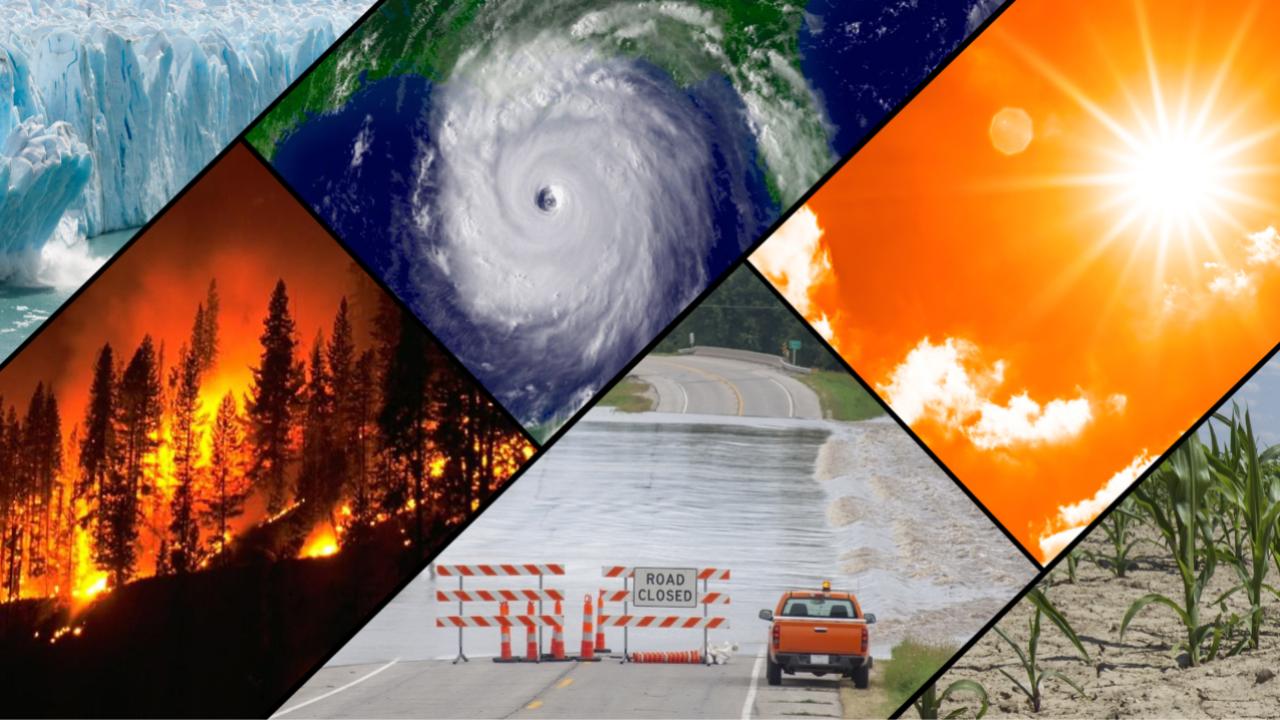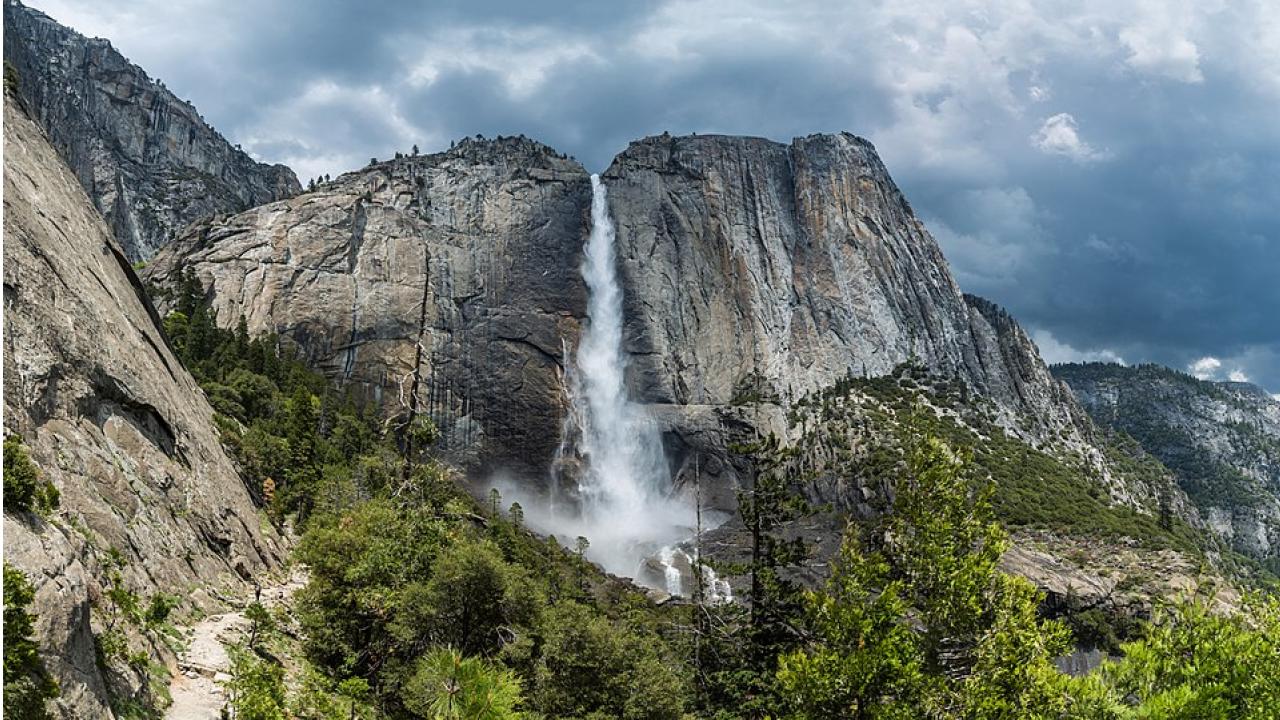Summary
Nature, in its broadest sense, encompasses all the phenomena of the physical world, including plants, animals, landscapes, and natural processes. It represents the non-human-made world and its intricate systems. Nature is often viewed as a creative and controlling force, shaping the universe and existing independently of human intervention. It includes both living organisms and the physical environment they inhabit, with a delicate balance of interdependence between them.
This post focuses on how futurists address the Challenges, Research, Projects with Nature.
OnAir Post: Nature
News
As Americans celebrate the Fourth of July, climate change is another factor shaping the United States’ independence. CBS Climatologist Marina Jurica discusses how it challenges your choice of where to live and its impact on farmers.
CBS News 24/7 is the premier anchored streaming news service from CBS News and Stations that is available free to everyone with access to the internet and is the destination for breaking news, live events, original reporting and storytelling, and programs from CBS News and Stations’ top anchors and correspondents working locally, nationally and around the globe. It is available on more than 30 platforms across mobile, desktop and connected TVs for free, as well as CBSNews.com and Paramount+ and live in 91 countries.
About
In essence, nature is a dynamic and interconnected system that sustains life on Earth and holds profound importance for both the planet and humanity.
Initial Source for content: Gemini AI Overview 7/5/25
1. Physical World
2. Living Things
3. Natural Processes
4. Ecosystems
5. Human Interaction
6. Importance of Nature
7. Conservation and Sustainability
Web Links
Challenges
The top challenges facing nature are primarily driven by human activities and pose significant threats to the natural world and its ecosystems. These challenges are interconnected and often exacerbate each other, creating a complex crisis for the environment. Addressing these challenges requires a combination of individual actions, policy changes, and international cooperation.
Initial Source for content: Gemini AI Overview 7/5/25
[Enter your questions, feedback & content (e.g. blog posts, Google Slide or Word docs, YouTube videos) on the key issues and challenges related to this post in the “Comment” section below. Post curators will review your comments & content and decide where and how to include it in this section.]
Biodiversity Loss
- This refers to the extinction of species and the disruption of ecosystems, impacting the richness and variety of life on Earth.
- It’s largely driven by human activities like habitat loss, climate change, and overexploitation.
- One million species worldwide are at risk of extinction if immediate action is not taken.
Climate Change
- Driven primarily by the burning of fossil fuels, it leads to rising global temperatures, more frequent extreme weather events, and changes in ecosystems.
- Consequences include rising sea levels, increased risk of wildfires, and stress on wildlife habitats.
- Melting ice caps and glaciers contribute to sea level rise, threatening coastal communities.
Pollution
- Includes various forms like air pollution, water pollution, and plastic pollution.
- Harmful substances disrupt ecosystems, harm wildlife, and impact human health.
- Examples include plastic pollution in oceans affecting marine life and industrial pollution causing respiratory problems.
Habitat Loss and Degradation
- This is the primary threat to biodiversity, caused by the destruction or modification of natural habitats for human uses like agriculture and urban development.
- For instance, deforestation for palm oil plantations leads to the loss of habitats for endangered species.
- It impacts over 80% of all species.
Invasive Species
- Non-native species introduced into an ecosystem can outcompete native species, disrupt food webs, and cause extinctions.
- Invasive species have contributed to a significant percentage of species extinctions.
Overexploitation
- Refers to the harvesting of resources (like fish or timber) at unsustainable rates, faster than they can regenerate.
- Overfishing is a major concern, depleting fish stocks and threatening marine ecosystem
Research
To address nature challenges, top research and innovations are focusing on several key areas. It’s important to note that these areas are often interconnected, and interdisciplinary approaches are crucial for developing effective solutions to nature challenges.
Initial Source for content: Gemini AI Overview 7/5/25
[Enter your questions, feedback & content (e.g. blog posts, Google Slide or Word docs, YouTube videos) on innovative research related to this post in the “Comment” section below. Post curators will review your comments & content and decide where and how to include it in this section.]
1. Nature-Based Solutions (NbS)
- NbS leverage the functions of ecosystems to benefit society and address environmental and public health issues.
- Examples include creating green infrastructure in cities to manage heat and reduce flood risk, restoring wetlands to improve water quality, and protecting coastal ecosystems like mangroves to enhance resilience to sea-level rise.
- These solutions can contribute to climate change mitigation by capturing and storing carbon.
- While some NbS pathways, such as tropical and temperate forest conservation and reforestation, have a sufficient scientific basis for implementation, others require more research to quantify their full potential and address uncertainties.
2. Conservation Technology
- AI and Data-Driven Solutions: Using AI and machine learning for real-time monitoring, predictive analytics, and identifying environmental threats like deforestation.
- Remote Sensing: Employing drones, camera traps, and lidar to observe ecosystems and wildlife, especially in remote areas.
- Bioacoustics Monitoring: Analyzing soundscapes to assess biodiversity and ecosystem health.
- Improved Wildlife Tracking: Developing smaller, more efficient devices to monitor animal movements and behavior.
- DNA Analysis for Conservation: Using techniques like eDNA to detect species presence and understand ecosystem dynamics at a molecular level.
- Citizen Science Platforms: Empowering the public to contribute to research and monitoring efforts.
- Blockchain Technology: Exploring blockchain for transparent tracking of conservation activities and sustainable products.
3. Biotechnology
- Bioremediation: Using microorganisms to break down pollutants in soil and water.
- Environmental Monitoring: Developing biosensors and bioassays to detect and analyze environmental contaminants.
- Sustainable Agriculture: Creating drought-tolerant crops and using biotechnology to reduce pesticide use and improve crop yields.
- Biofuels and Biogas: Producing renewable energy from organic waste and crops.
- Bioplastics: Developing biodegradable alternatives to traditional plastics.
4. Biomimicry
- Drawing inspiration from nature’s designs and processes to solve human challenges, aiming for efficiency and sustainability.
- This approach can be problem-based (identifying a challenge and finding natural solutions) or solution-based (observing natural designs and finding applications).
- Examples include developing self-cleaning surfaces inspired by lotus leaves, creating aerodynamic designs based on bird wings, and improving energy efficiency in buildings inspired by termite mounds.
5. Circular Economy
- Transforming production and consumption systems to minimize waste and pollution, circulate products and materials, and regenerate nature.
- This includes reducing resource demand, preventing pollution, and promoting biodiversity-friendly sourcing.
- Circular economy approaches can benefit biodiversity by reducing pressure on ecosystems from resource extraction and promoting regenerative practices.
6. Restoration Ecology
- Focuses on rehabilitating degraded or damaged ecosystems to restore their natural balance and biodiversity.
- It involves various scientific disciplines and applications to understand and implement effective restoration practices.
- Innovations include using drone technology for monitoring and seeding, AI for predictive modeling, and advancements in ecological modeling and simulation.
Projects
Current and future projects focused on addressing nature’s challenges often involve Nature-Based Solutions (NbS), which utilize ecosystems to address environmental and societal issues. Here are some key areas and examples:
These include initiatives in areas such as forest conservation and restoration, wetland and marine ecosystem conservation, sustainable agriculture and land management, sustainable urban development, and addressing water challenges.
Initial Source for content: Gemini AI Overview 7/5/25
[Enter your questions, feedback & content (e.g. blog posts, Google Slide or Word docs, YouTube videos) on current and future projects implementing solutions to this post challenges in the “Comment” section below. Post curators will review your comments & content and decide where and how to include it in this section.]
1. Forest Conservation and Restoration
- Notable projects include the Great Green Wall in Africa, aiming to restore degraded land and combat desertification; Pakistan’s Tree Tsunami; efforts in the Peruvian Amazon working with farmers on sustainable practices; Kenya’s Green Belt Movement focused on community-based tree planting; and organizations like Blue Forest and Funga specializing in mangrove restoration and reintroducing fungal diversity. Other initiatives utilize technology for faster reforestation, such as Groasis B.V.’s plant cocoon technology and MORFO’s drone-based restoration, while foundations like SankalpTaru and organizations like Terraformation focus on large-scale tree planting for environmental and community benefits.
2. Wetland Conservation and Restoration
- Examples include the Oostvaardersplassen Wetland in the Netherlands and the Mississippi River Delta Restoration Project, which aims to revitalize coastal wetlands for carbon sequestration and storm surge protection. The protection and restoration of the Sundarbans Mangrove Forest is another key project. Wetland conservation generally enhances water quality, regulates floods, and supports biodiversity.
3. Coastal and Marine Ecosystem Conservation
- Projects include efforts to restore the Great Barrier Reef and the recovery of the Belize Barrier Reef System due to government actions. The Maiden Island utilized artificial reefs for habitat rebuilding, and projects in the Netherlands and elsewhere are rebuilding oyster reefs to improve water quality and protect coastlines. Protecting and restoring coastal habitats like mangroves, coral reefs, and salt marshes is a significant focus, as is the role of these “blue carbon” ecosystems in capturing and storing carbon.
4. Sustainable Agriculture and Land Management
- Practices include agroforestry, cover cropping, rotational grazing, integrated pest management, and precision agriculture. Restorative agriculture practices that build soil carbon, such as no-till farming, are also being implemented. A specific project example is the Vietnam Mekong Delta Restoration, which uses nature-based solutions for adaptation in freshwater ecosystems.
5. Sustainable Urban Development
- Solutions involve green infrastructure such as parks, green roofs, urban forests, and constructed wetlands. Rain gardens and bioswales help manage stormwater runoff, while urban agriculture and rooftop gardens promote local food production and green spaces. Green building practices are also incorporating nature-based solutions. Project examples include Amsterdam’s RESILIO project for climate resilience and China’s Sponge City Initiative to manage stormwater. Durban, South Africa, is also coupling ecosystem restoration with job creation.
6. Addressing Water Challenges
- Solutions include watershed management to protect and restore forested areas for clean water supply and riparian zone management to reduce erosion and filter pollutants.
7. Innovative Approaches
- These encompass habitat banking to incentivize conservation, eco-friendly mobility solutions, the creation of biodiversity corridors to connect habitats, biomimicry in design, and citizen science to engage the public in environmental efforts











